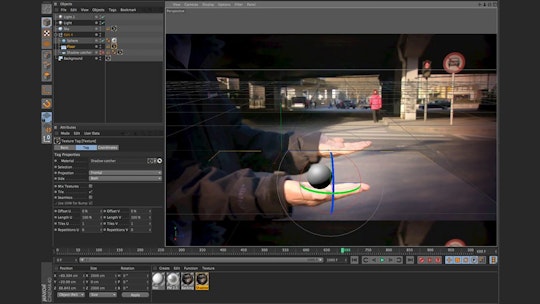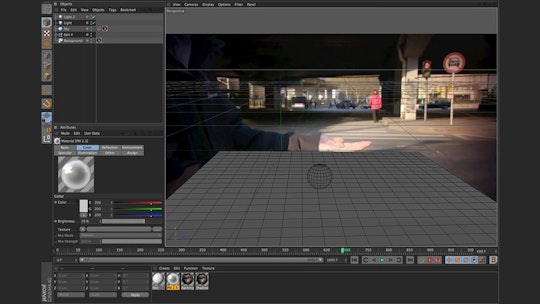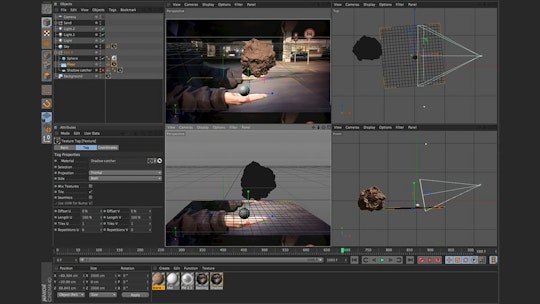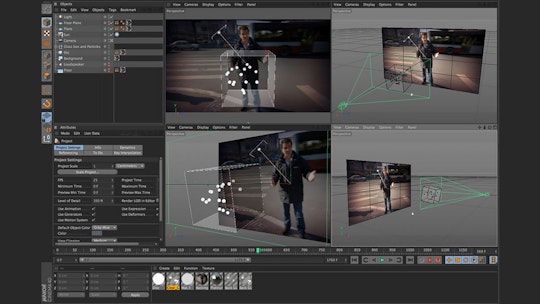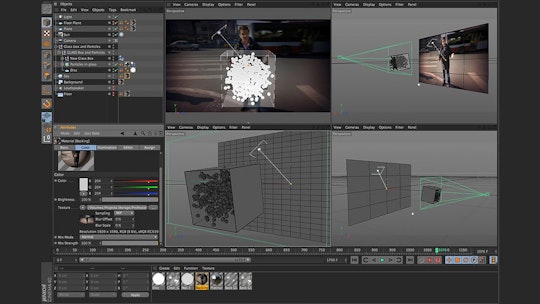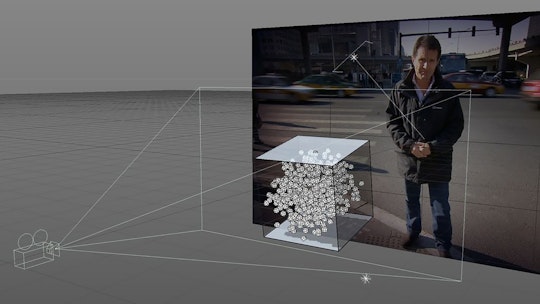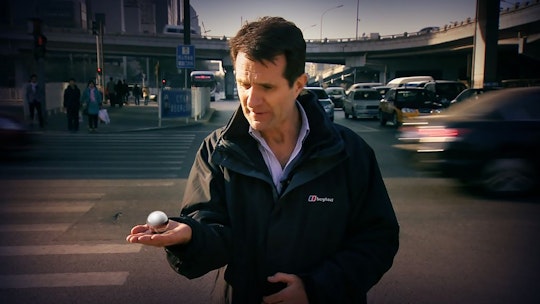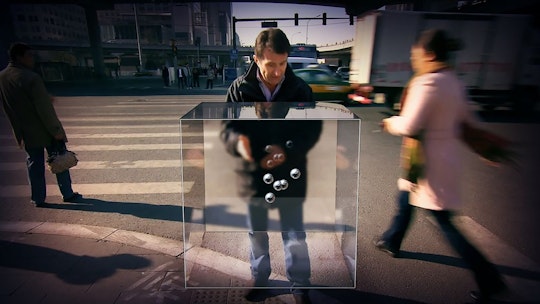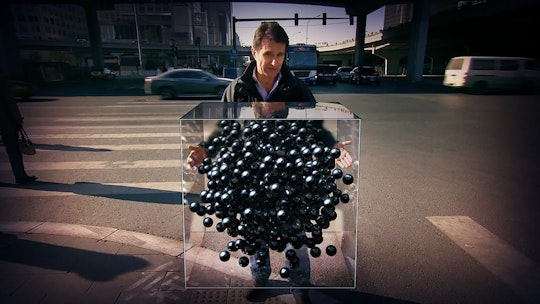
BBC News - China's PM2.5 Crisis To explain the problems with pollution in major Chinese cities, broadcast designer Sophia Kyriacou turned to Cinema 4D's varied toolset.
A BBC correspondent stands on a busy street in Beijing, explaining the issues of particulate matter in the atmosphere - specifically PM2.5, a collection of carbon deposits, organic compounds and specks of metal, just 2.5 microns in diameter. The high levels of PM2.5 found in Chinese cities is a major concern and the piece was designed to highlight the dangers. Of course, these particles cannot be seen so it's difficult for the viewer to grasp their physical nature, and thus the hazards of these tiny pollutants.
The task of visualizing the sequence was given to Sophia Kyriacou, a broadcast designer who has worked at the BBC in London since 1998. "It was essential to create a sequence that made identifiable and understandable comparisons to help make an explanation easier to its audience," she says. "By using the example of an already small particle such as 'a grain of sand' and then informing the viewer that PM2.5 is 20 times smaller made the viewer think that this small pollutant should be taken seriously."
This explanatory sequence was commissioned by the BBC Science Unit and, like all of Sophia's work for the BBC, had to fit in with the channel's branding in terms of its informative tone, style and typography.
Sophia wasn't present at the shoot, so some preparation was done in advance to make sure the footage arrived as planned. "We ran some tests on the roof of Broadcasting House to get a feel of the 'outdoors', and as something to use in R&D to light the scene and play with different camera shots. Once the footage was fed back to London it was pretty much crack on and deliver," explains Sophia.
The first part of the sequence was created using images of a single sphere representing a particle of PM2.5, and a single grain of sand blown up to enormous proportions. To create the reflection needed to tie the sphere in with the hand, Sophia added a floor object under the sphere and mapped the video onto it using frontal projection; the sphere then reflected the hand and its surroundings perfectly. The over-sized grain of sand is just a basic object displaced using the Noise function in Cinema 4D.

The two elements were rendered out as static images with an alpha matte, plus a separate ambient occlusion pass used to add a shadow on the correspondent's hand. Contrast levels were tweaked in Photoshop, and then the images were imported into Adobe After Effects and tracked into the live action shot. However, this was made more difficult by the lack of tracking markers, plus a degree of compression when the HD footage was sent down the line. The task was accomplished by using After Effect's built-in Tracker and then manually tweaking the result.
The second part of the sequence, involving a glass box and multiple particles, proved much more challenging. "Glass is always a tricky material to work with as you can't hide anything," admits Sophia. "The glass was the crucial technical element to get right in the entire sequence, and if it wasn't done correctly it would look wrong. Obviously the spheres had to be clearly seen as they were integral to the actual explanation, so I decided to make the back of the cube slightly frosted to make them stand out more. I achieved this by applying a separate back glass with added blurriness to the transparency."
Sophia used Cinema 4D's Sun object to light the scene, with a separate key light to highlight parts of the glass and spheres. "The shot footage had strong shadows," she explains, "so this gave me a rough indication of the time of day. I played around with the time and date settings until I had a scene that pretty much matched the supplied footage."
To complete the lighting she took a frame of the video footage and wrapped it around a Sky object to emulate global illumination. "Global Illumination was essential in making this scene work," says Sophia. "I needed my 3D objects to mimic reality and sit as naturally as possible in the real environment in which they were placed. Without GI it simply wouldn't work. I used the shot footage as a 'fake HDRI' to light the scene and accompany the sun light and key light I had in the scene."
Cinema 4D's MoGraph toolset was also brought to bear in generating the PM2.5 'particles'. The Cloner object was used to replicate the sphere, using the Radial settings and both a Random and Delay effector. "I like the Delay effector," comments Sophia. "It gives objects a feel of 'character' and I used it extensively when I created my Paper Town animation for the BBC Business Unit."
To generate the glass reflections, the video footage was added to a separate plane and made invisible to the camera using a Compositing tag. "Seeing the reflections appear comfortably and naturally around the cube was an achievement. It blended well and didn't look out of place - a simple trick with very rewarding results."
"The entire end section of the sequence was filmed as a locked off shot," she adds. "I rendered a static matte of the box so I could cut out the animation of both the reflecting glass box and the animated spheres. I could then composite it back onto the clean background plate for further treatment, such as adding shadows and pulling out extra highlights."
The final step was a color grade in After Effects with a dark vignette to give it a slightly polluted feel. The resulting sequence was then nominated for a PromaxBDA Global Excellence Award for 'Best Art Direction & Design: News Program Informational Graphics,' where Sophia was awarded the Bronze medal.
